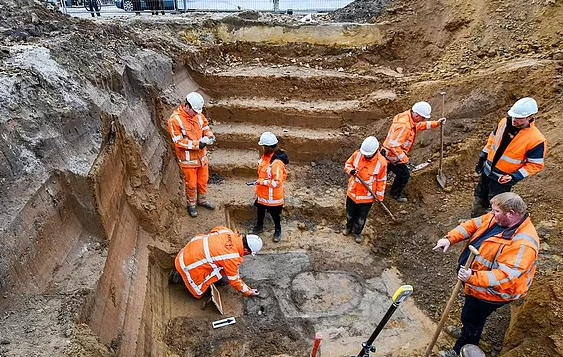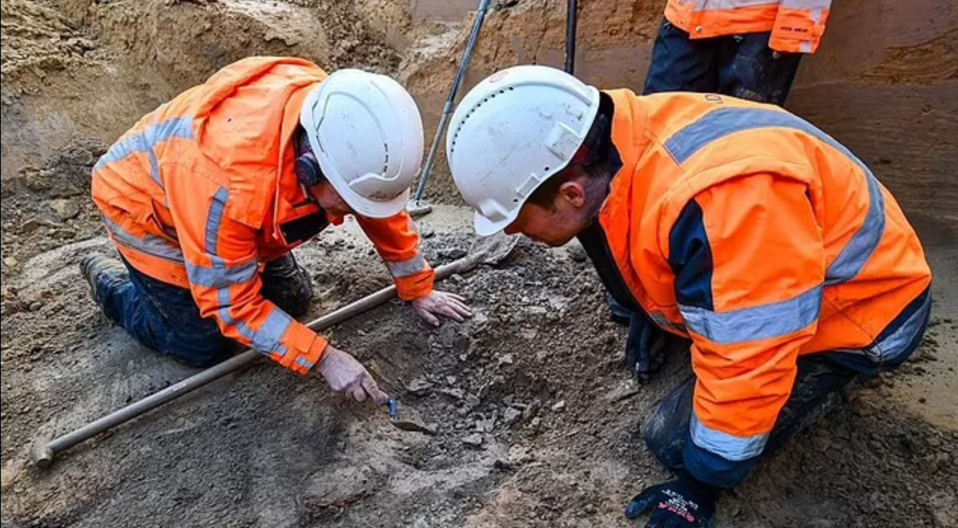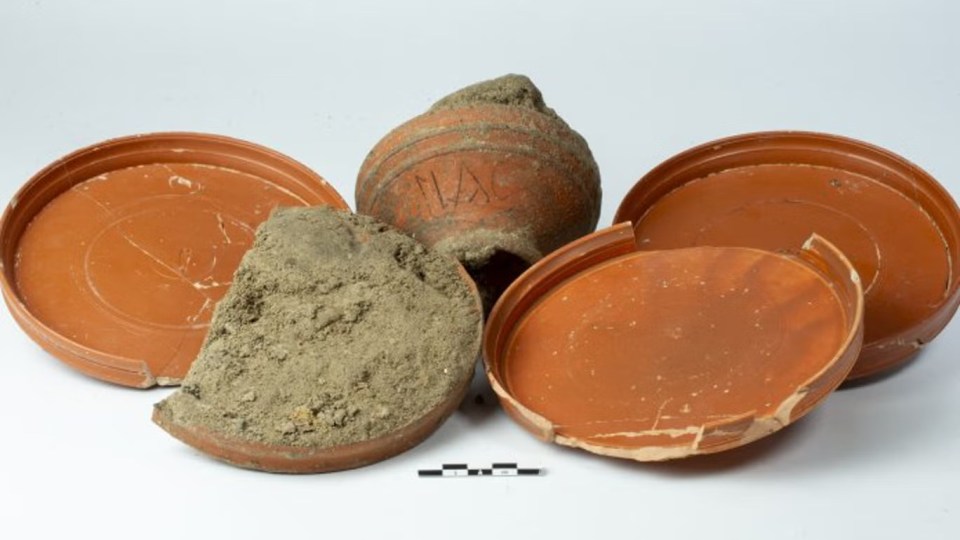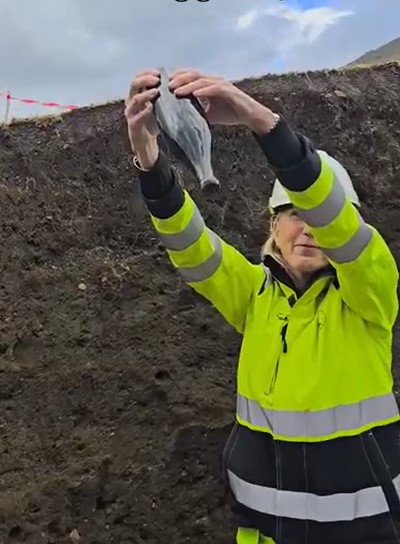THE remains of a man believed to be from “year 0” have been discovered inside a unique Roman grave.
A clever team of archaeologists unearthed the more than 2,000-year-old find in the Netherlands and believe it could shed some light on ancient civilisation.
Researchers have even claimed to have deciphered the name of the Roman man found in the municipality of Heerlen in November.
They say he most likely went by the unusual nickname of Flaccus and was probably a soldier.
His remains were found alongside a number of bowls, plates and even a bronze skin scraper believed to belong to Flaccus.
One bowl had the word “Flac” carved into it which led to the man being named by researchers by using similar terms from the time period.
read more in historic finds
The discovery was made by archaeologists from ADC ArcheoProjecten during excavations at the Raadhuisplein square.
Analysis of the grave and what laid within pointed towards it being made somewhere between 0 to 20AD, researchers say.
This suggests Flaccus was a Roman soldier stationed at Coriovallum as it was then a military settlement for the Italians.
Coriovallum – which is now known as Heerlen – was established at the junction of two major roads known as the Via Belgica and Via Traiana.
Romans thought this was a strong region as it connected areas which are today known as parts of Germany and France.
A proud Jordy Clemens, Heerlen’s council member for culture and heritage, said: “Today, evidence was found of Roman habitation in the time of Emperor Augustus.
“A unique discovery that not only teaches us more about our past, but also shows how unique the story of Roman Heerlen is for the Netherlands.”
The findings are set to provide valuable data for archaeologists.
Clemens added: “Never before have we found a Roman grave from this period with a name.”
The artefacts from Flaccus’ grave are now set to be cleaned before being displayed at the new Roman Museum of Heerlen.
Dozens of digs in Heerlen have found ancient artefacts in recent years but none could help confirm a date that people actually lived in the area.
The furthest back date archaeologists had up to now was from 40 to 70 CE as public baths were found.
These are still the largest visible Roman ruins left in the Netherlands.
Experts believe the Roman expansion across into the Netherlands started around 19 BC.
Many of the first generations of Romans to move were on military duties under emperor Augustus.
The breathtaking discovery came just days after scientists claimed to have unearthed the world’s oldest human DNA in Europe.
In a cave under a medieval castle, 13 bone fragments were unearthed that belonged to six individuals including a mum and a daughter, as well as distant cousins.
The fragments were discovered in Ranis, Germany, with the people they belonged to believed to have walked the earth around 45,000 years ago, according to a study.
Elsewhere, an archaeologist found a secret message in a bottle from a Viking dig site dating back to 150 years ago.
The bottle was discovered at a known viking burial site in Norway and was originally buried by another archaeologist in 1874.



